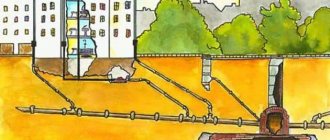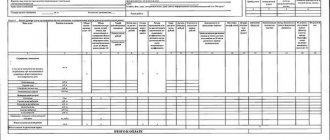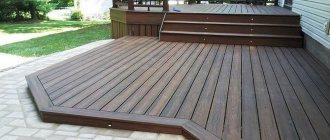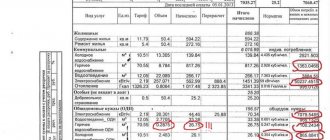Maintenance costs
Who do we pay?
Management company. In our case, this is LLC “UK Moy Gorod”.
What are we paying for?
Current content: The most extensive and variable tariff. This includes services (preparation for winter, maintenance of elevators and meters, etc.), janitor work, snow removal, deratization (extermination of rats or mice), garbage removal, elevator maintenance, expenses for routine repairs and a long list of all kinds of household goods. The money we pay will be used to purchase materials and salaries for the management company’s specialists.
How much do we pay?
Ideally, the general meeting of residents should determine which items will be indicated in this tariff. For example, they may decide not to spend more money on exterminating rodents (they’ve killed them all for several years now), but instead pay the janitor more to sweep not once a day, but three times.
But, as Oleg Ilyasov said, in many buildings, meetings of residents are generally a rare thing, and it is impossible to expect clear decisions from them. Such houses are charged at a rate approved by the city council of people's deputies - according to the social norm, but they also do not receive any services above this norm. As we can see from our “payment”, in “UK My City” this fee is 18.67 rubles per square meter. We simply multiply this amount by the number of square meters and get the real cost of “current maintenance”.
Lines 2,3
What does the receipt look like?
The document is drawn up in the approved form. Therefore, deciphering a receipt for housing and communal services is impossible without understanding its components:
- payer information;
- housing address;
- details and other information about payment recipients;
- current account number;
- barcode or QR stamp;
- privileges;
- information about debt or recalculation;
- information about services (their detailed list);
- tariffs, amount to be paid.
The information listed is always reflected in the receipt.
For utilities
Payment documents of this group require reimbursement of the cost of the supplied resource. This could be electricity, gas, water. The amounts indicated in the receipt are calculated based on tariffs and consumption volume. The latter indicator is indicated based on meter readings. Or the accrual occurs at average rates, which is less profitable than paying by meter.
For housing services
These include those that are not associated with the supply of special resources. Housing services are not quantifiable. These include:
- repair;
- communications maintenance;
- garbage removal;
- landscaping and yard maintenance;
- arrangement of parking spaces, etc.
Separate payments for the listed services are not sent. They are included in the general receipt for rent and utilities.
Hot water
Who do we pay?
The energy supplier is Teploenergo OJSC.
What are we paying for?
For hot water in the bathrooms and kitchen, and also for “general household needs.” Funds paid by residents are used for the maintenance and repair of boilers and communications, the purchase of coal and fuels and lubricants, as well as for employee salaries.
How much do we pay?
In the second line, a system of two tariffs already begins to operate - “according to the social norm and above the social norm.” To pay for hot water, there is a uniform standard for the entire city - 3.37 m3 per person per month. In our “payment” we are talking about an apartment with two tenants. This means the standard is 6.74 m3. In December they used 6 m3 per couple. We met the standard, which means we count according to the social norm. We simply multiply the tariff by the cubic meters spent.
25.49 x 6 = 152.94 rubles
But let's make it more difficult. Let's imagine that the residents of this apartment took a bath very often and exceeded the norm, spending, for example, 8 m3 of hot water. In this case we think like this:
• 8 – 6.74 = 1.26 m3. This is excessive consumption of hot water.
• 6.74 x 25.49 rubles (social tariff) = 171.80 rubles
• 1.26 x 46.6 rubles (tariff “above the social norm”) = 58.71 rubles
• We add up the resulting results: 171.80 + 58.71 = 230.51 rubles. This is the amount you have to pay for hot water.
For general house needs, payment is fixed, according to the same standard. Our residents pay this 4.87 rubles every month.
“To be honest, this is a generally difficult position to explain. It is prescribed by law, but now the issue is being developed to make amendments and remove the ODN for water altogether. But until the amendments are made, we are accruing one fixed income tax – as stated in the law,”
— explained
Oleg Ilyasov
.
Line 4
Payment without meters
Despite the established rules, not all apartments still have meters. Persons who have not installed devices will have to pay based on an increasing coefficient from the beginning of this year.
That is, when calculating the fee, the consumption standard, the number of residents, the tariff, as well as this coefficient will be taken into account. In fact, the fee for them will be increased by one and a half times.
It should be noted that tariffs for water and other resources may vary in different regions. Consequently, the payment for its consumption, both with and without meters, may be different.
Heating
Who do we pay?
JSC "Teploenergo"
What are we paying for?
For the hot water that runs through pipes and radiators and warms us from September to May.
How much do we pay?
As in the case of hot water, heating fees are also charged at two tariffs. But, as Oleg Ilyasov
, here the fee is calculated differently - for each heated square meter. And the size of the social norm depends on the ratio of the area of the apartment and the number of residents.
“An area that is above the social norm is a slightly different tariff. 33 square meters is the social norm for one person. If there are two, then 42 squares. If there is an excess, then each square is charged at a rate “above the social norm”,
— said
Oleg Ilyasov
.
It should be taken into account that in the city of Kemerovo there are two types of houses: some have communal heat meters installed (this is approximately 90% of apartment buildings), while progress has not yet reached the rest. The former pay for heating only from September to May (0.28 Gcal/m2), the latter pay for the whole year (0.14 Gcal/m2). However, the calculation principle is the same in both cases.
Calculating payment for heating is the most complex mathematical operation in your “payment bill”. There are a lot of decimal fractions here, you have to multiply by zero integers and God knows how many thousandths, but if you decide to be a zealous owner, then please comply. However, in reality, everything is not so scary - the calculator will help you.
So, we are considering a payment for an apartment with an area of 70.8 m2, in which two people live. That is, in our case, 28.8 m2 must be paid at a more expensive, “supersocial” tariff. There is a common house meter, so the standard is 0.028 Gcal/m2.
The formula is as follows: number of Gcal/m2 x tariff x area.
0.028 Gcal/m2 x 595.14 rub. x 42 m2 = 710.84 rub. This is the price for 42 square meters according to the social tariff. Now we are carrying out the same operation for the remaining 28.8 m2 at a tariff above the social norm.
0.028 Gcal/m2 x 746.24 rub. x 28.8 m2 = 611.18 rubles (28.8 square meters at a rate above the social norm)
We add up the results:
710.84 + 611.18 = 1322.02 rubles – the total amount for heating the apartment in January.
By the way, there are no “common house needs” for heating. The calculations take into account the total cubic capacity of the house, which means that what you paid should be enough to heat the entrance, basement and attic.
Lines 5, 6, 7
How to understand the contents of a document
Some payment provisions may raise questions among consumers. Abbreviations are not always clear. Sometimes it is difficult to find individual important information. Let's look at how to understand a rent receipt.
Account number
This ID is very important. A personal account is opened upon receipt of ownership of an apartment or house. Using its numbers, you can pay for housing and communal services or find out all the necessary information on the Internet. Knowing the address and personal account, the buyer of the property, even before concluding the transaction, will be able to verify that there are no debts or a lien on the living space.
Where to indicate a personal account on a payment slip is not regulated by law. However, clause 69 of the Government of the Russian Federation Decree No. 354 of 05/06/2011 lists everything that this payment document should include. The numbers should be found in the receipt header closer to the upper left corner.
Cold water and drainage
Who do we pay?
Water supply organization - JSC SKEK.
What are we paying for?
For cold water, without which there is no life, and for sewage, without which life is not life at all. Water intake, pumping stations, water treatment facilities, hundreds of kilometers of pipes - all this requires maintenance and repair. And there are hundreds of specialists who need to be paid salaries.
How much do we pay?
All difficulties ended with the “heating” item. Any second-grader with a calculator can handle the rest of the payment.
Water must not only be supplied to the house regularly, but also removed from it regularly. And this also costs money - 12.39 rubles per m3. The standard is indicated in the document, but only for informational purposes - so that people know how much precious moisture they transferred per month. Holders of our payment, for example, spent 14 m3. We multiply this amount by 12.39 and voila - your debt for sewerage is 173.46 rubles.
In the same way - by simple multiplication - we calculate the payment for cold water. The price of a cubic meter is 26.50 rubles, spent - 8 m3; multiply and get 212 rubles per month. For cold water, just like for hot water, a fee is still charged for “general household needs.” And also at a minimum - 5 rubles per month.
Lines 8, 9
Energy supply
Who do we pay?
Electricity supplier – ESKK LLC.
What are we paying for?
For the joys of civilization - from the light bulb on the ceiling to the computer on which you are reading this article. Electricity supply means wires, substations, more wires, aerial platforms, more wires... in general, a huge enterprise and hundreds of workers.
How much do we pay?
Here, too, you don’t have to overload yourself with calculations. You may not even know what a kilowatt is. The main thing is to know the tariff. In Kemerovo there are two of them - 1.92 rubles for apartments with an electric stove, and 2.74 rubles for apartments with a gas stove.
Judging by our “payment” we can conclude that the stove in the house is electric and the owners spend electricity sparingly. The standard per person is 100 kilowatts per month. The residents spent exactly 200 - they met exactly the same amount. However, if you slightly exceed the norm, then it’s okay too - the price per kilowatt will not change in any case.
200 x 1.92 = 384 rubles – our monthly payment for electricity.
In the case of electricity supply, payment for common household needs is no longer a formality. Entrances, basement, attic, courtyard - all this needs to be illuminated, and most houses also have elevators. The payment for one-room service is calculated according to the common house meter. The balance that is not covered by apartment payments is the cost of single living expenses. This amount is divided by the number of apartments. In our case, it turns out - 40.506 kilowatts per month. We multiply by 1.92, we get a payment for ODN for electricity in the amount of 77.77 rubles.
Line 10
Electricity receipt: explanation
Payment for consumed electricity is not always included in a single payment. For example, if the supply of electricity is carried out under a separate agreement with the energy supply company, then a separate invoice is issued. In such a receipt you need to indicate data from the electricity meter.
It is mandatory to provide meter readings, otherwise charges for electricity will be made according to the standards.
Receipts also contain information about the timing of payments and existing debts. It is necessary to follow all stipulated rules for paying for housing and communal services. Otherwise, penalties will be charged, and in case of prolonged non-payment, the lights may be turned off altogether, for example.
At the end of the receipts there is usually a notice for all consumers of a reference nature about standards and other information on paying for housing and communal services.
Electromagnetic locks
Who do we pay?
The intercom technical center - in our case it is TCD Digital-Kemerovo LLC.
What are we paying for?
For relative safety, cleanliness and order in the entrance. For complete peace of mind, one castle is still not enough - here you need to chip in for the concierge. For your money, the company is obliged to maintain the lock and, in general, the entire front door in good condition.
How much do we pay?
Depends on the agreement with the company. By the way, it won’t hurt to have a copy of this document on hand. “Tsifral”, for example, asks for 44 rubles per month. All. No calculations.
Line 11
What should I do if I didn’t receive the receipt?
As a rule, every month residential property owners receive a paper receipt for utility bills via mailbox. However, there are cases when the payment form does not arrive for some reason, or the citizen is in another locality and cannot pay the receipt from the management company on time.
What to do if you don’t have a receipt on hand:
- contact the housing office or management company to clarify the amount of payment;
- request information about charges on the Internet - on the website of the bank or service provider;
- contact your utility service provider in person.
If you don’t have a receipt, you can pay for utilities via the Internet - on the State Services website or using electronic money, for example, the Yandex Money service. To make a payment, you will need a personal account number, billing period and address of the premises.
If a payment has already been made via the Internet using a certain service, then the payment details will most likely be saved in it. They should be used to make the payment again.
However, not everyone has the opportunity to pay via the Internet. If an apartment building is serviced by a single settlement center, you can receive a receipt form by email by sending a request to the territorial office of the Unified Center.
A copy of your passport, as well as a title document for housing, should be attached to your application. After receiving the payment document, you can print it out and pay at the bank’s cash desk, or at the ERC or other payment acceptance point.








